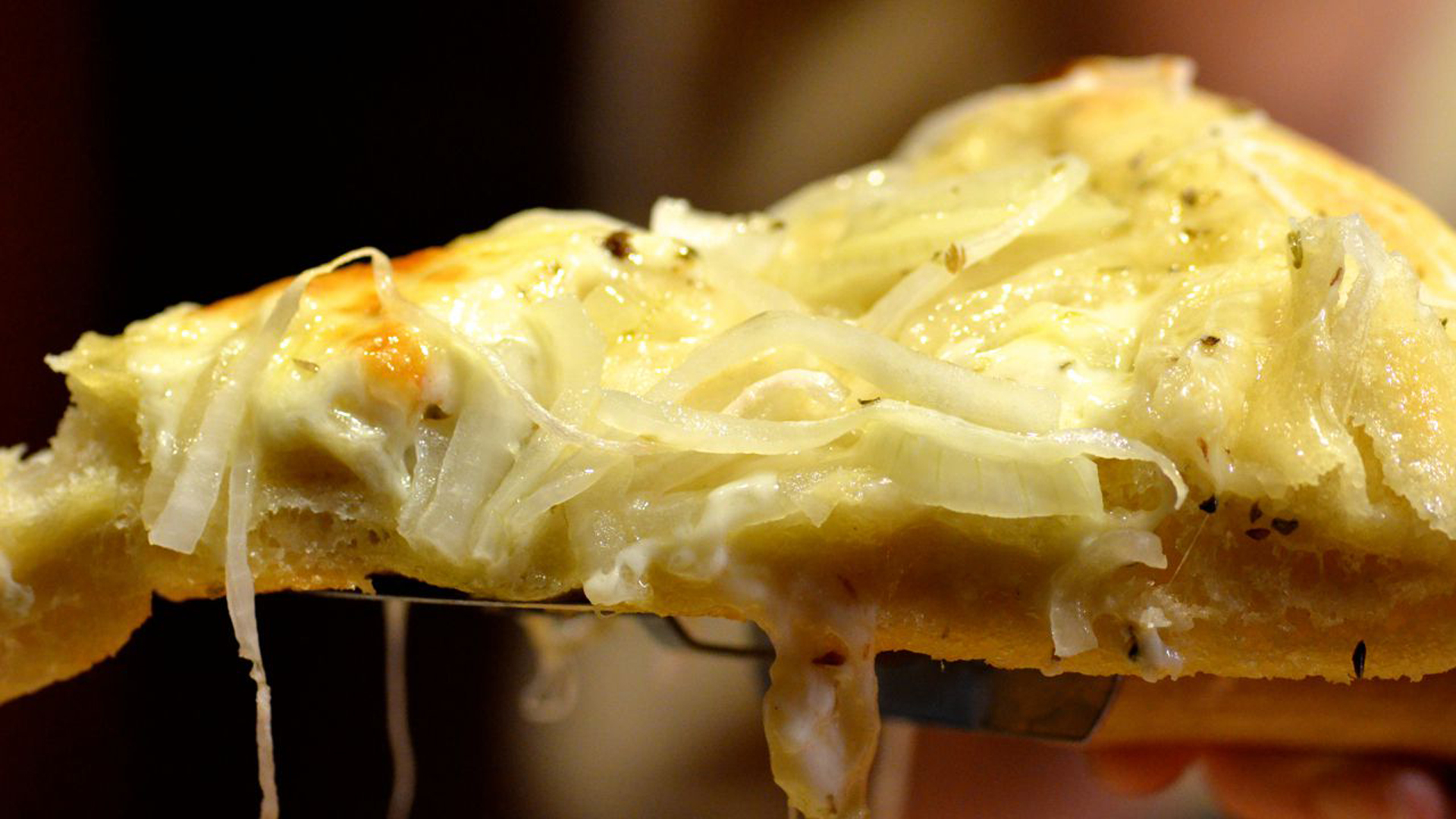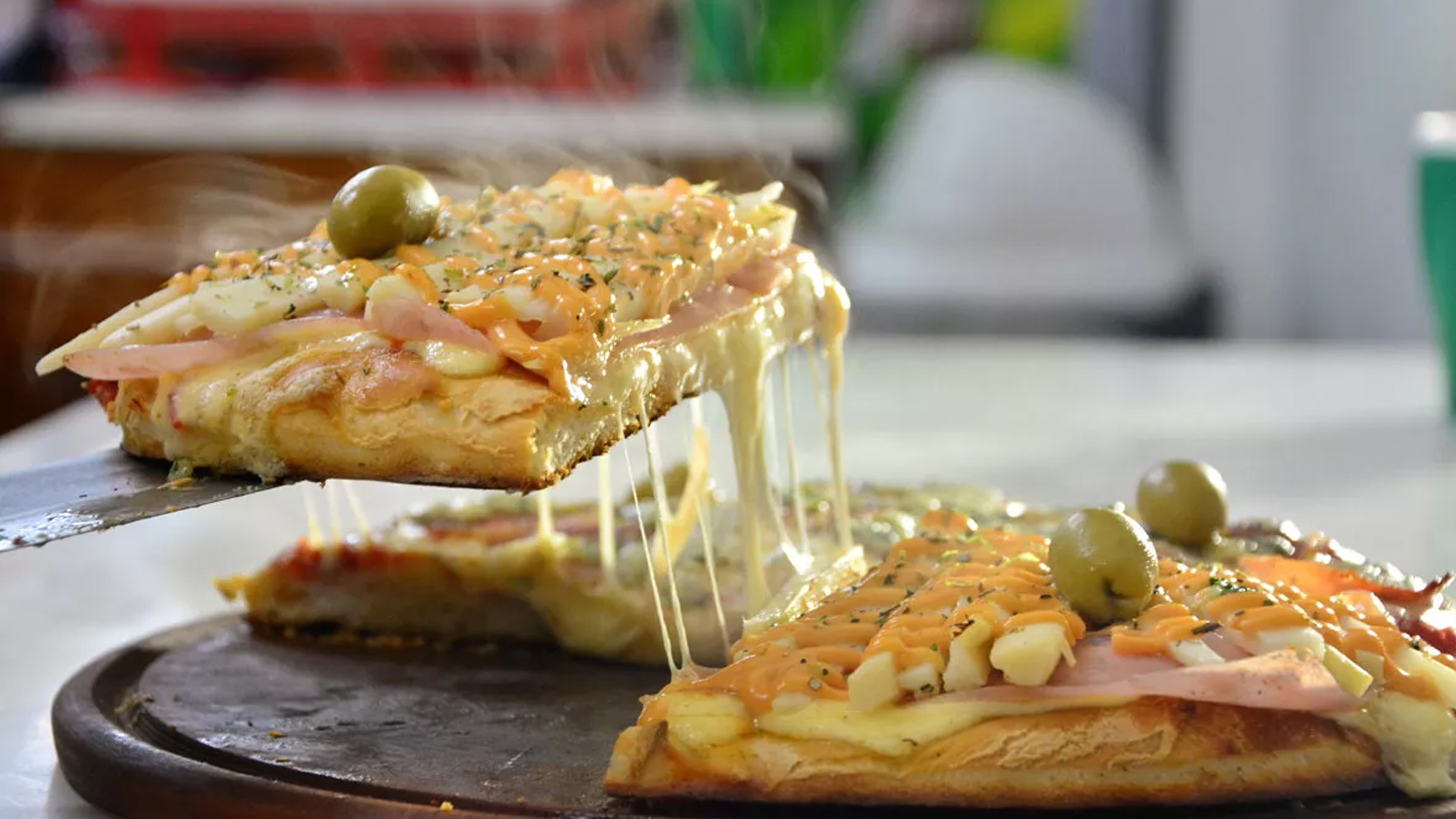Pizza might not be the first thing that comes to mind when thinking about the cuisine of Argentina, yet, there are now more pizzerias than steakhouses in the nation's capital, Buenos Aires. There's a simple reason for that: Italians.
Argentina was a major destination during the Italian diaspora of the 19th and early 20th century. In fact, before 1880, more Italians were moving to Argentina than to the United States. Today in Argentina, Italians are the largest ethnic group in the country, with somewhere between 25 to 30 million people claiming a link to Italian heritage, out of a total population of 45 million.
The first Italian immigrants began arriving in Argentina in the 1850s, a few decades before Italians arrived in the United States. Most departed from Genoa and the surrounding northern regions. By contrast, the vast majority of immigrants to the United States came from the south of Italy. Eventually southern Italians did head to Argentina as well, but not before the Genovese had established enclaves in the country.

(Photo Credit: thespruceeats.com)
With so many Italians arriving in the country, developing a pizza culture was inevitable. By the 1880s, Italians owned the majority of bakeries and almost all the latterias for making cheese in Buenos Aires, according to food historian Rachel Laudan. As a result, Argentinian cheeses have a distinctly Italian influence. As an example, Argentinian Queso Cuartirolo is similar to Quartirolo Lombardo, a soft cow's milk cheese from northern Italy. And queso de barra is a low-moisture, cow's milk cheese similar to mozzarella, sometimes called muzzarella or muza. Cheese plays a big role in Argentinian cuisine, and is particularly important to the nation's pizza.
The first pizzeria opened around 1882 in the La Boca neighborhood, an Italian enclave of Buenos Aires, more than two decades before Lombardi's first opened its doors in New York City. This shop is credited to neapolitan born Nicolas Vaccarezz who arrived in Buenos Aires in the mid-1800s. Pizza had grown into a staple of working-class neighborhoods of Naples by then Vaccarezz left Italy. And like with New York style pizzas, Vaccarezz's pizzas were baked in bread ovens rather than purpose-built pizza ovens. Since these ovens were not traditional pizza ovens, these early pizzas were baked in pans becoming known as pizza al molde. The early pans were square or rectangular, but over time evolved to use round pans.
Pizza al molde comes with a variety of toppings including tomato sauce with cheese. The thick crust has a soft, bready texture and is considered either alta masa or media masa, a high-rising or medium rising dough, based on how high on the pan the dough comes, from about half an inch to three quarters of an inch.
(Photo Credit: amigofoods.com)
Perhaps the best known style of pan pizza is a fugazza, a simple focaccia dough topped with a light sprinkle of parmesan cheese, onions, and oregano. The term for this style comes from the Genovese dialect for focaccia, fügassa. Onion-topped focaccia is common in Liguria, the region where Genoa is located.
The fugazzeta is similar to fugazza, but with the addition of a large amount of "muzzarella," the queso de barra. The thick layer of cheese defines the fugazzeta, although it is also often topped with onions.
Finally, a stuffed version of fugazzeta, the fugazzeta rellena, has become the most sought-after variation. In this recipe, a layer of dough fills the pan, a thick layer of the "muzz" is piled on, topped by a second layer of dough, and then finally a thick layer of onions is added. Slices of the pie ooze with melted cheese.
The fugazzeta can be traced back to a Genovese pizza-making family. In the 1890s, Don Agustin Banchero arrived in Buenos Aires from Genoa. He set up shop in the La Boca neighborhood around 1893 selling fugazza, the simple focaccia bread similar to those in his hometown. Banchero and son Juan then began operating the Riachuelo bakery where they sold a fugazza con queso, a focaccia with cheese that eventually would evolve into the fugazzeta. Finally, in 1932, Juan and his sons Titus and Antonio opened Pizzeria Banchero and introduced the modern fugazzeta as it is baked today – a focaccia with an overwhelming amount of cheese. Pizzeria Banchero has since opened a location in Miami, Florida, as well as continuing to operate in Buenos Aires.

(Photo Credit: thespruceeats.com)
A competitor, La Mezzetta first opened in 1939, but is now a must-visit destination for authentic fugazzeta pizzas, especially after appearing in the Netflix series, Street Food: Latin America. Here, customers eat their pies standing at the bar. Besides the traditional fugazetta, the shop also sells pizza with ham and red peppers or tomatoes and oregano.
Since the 1980s, Argentinians have also been enjoying pizza a la piedra, stone-baked pizza, seen as a more modern style. This type of pie is similar to a Neapolitan pizza, made without a pan and cooked directly on the oven's stone. Unlike pan-baked pizzas, the dough has more water and includes oil. The high temperatures and cooking directly on the stone crisps the crust, while pizza al molde tends to be softer and doughier. These pies commonly are topped with tomato sauce and cheese and a variety of toppings.

(Photo Credit: elgourmet.com)
Another style of pizza in Argentina is Pizza a la Parrilla, grilled pizza. The dough is extra thin, like an American bar pie. The dough is grilled on one side before it is flipped and toppings added.
While cheese is typically the star of any Argentinian pie, other common toppings include tomato sauce, pepperoni, jamon, chorizo, anchovies, and artichoke hearts. However, one special topping known as fainá creates the entire style of pizza onto itself. Fainá is a thin pancake made from chickpea flour. Pizzas made with tomato sauce and cheese are topped with the slices of fainá, called pizza a caballo, "horseback pizza." Fainá is similar to Italian farinata, a flatbread made from chickpea flour. It is common in Liguria.
The origins of fainá pizza date back to the Italian-owned bakeries in the early 20th century. The chickpea flour provided protein making fainá a popular bread. Pizza a caballo developed as early as the 1920s when soccer fans would buy both fainá and fugazza from bakeries while on their way to the stadium. Adding the sliced fainá to the extra cheesy pizza makes it easier to eat on the go. Fainá pizza is typically paired with cheap, sweet muscat wine.
Another quintessential soccer pizza is known as pizza canchera. Similar to the famous Neapolitan pizza marinara, canchera comes topped with just tomato sauce. It's considered a "match day pizza," because of the simple ingredients. Oscar Vianini invented the pie to be sold after soccer matches, and early versions were sold cold. The shop, Pizzería Angelín, is not far from the Club Atlético Atlanta stadium. Pizzería Angelín was founded in 1938 and still serves up pizzas to soccer fans.Ian MacAllen
Ian MacAllen is America Domani's Senior Correspondent and the author of Red Sauce: How Italian Food Became American. He is a writer, editor, and graphic designer living in Brooklyn. Connect with him at IanMacAllen.com or on Twitter @IanMacAllen.

